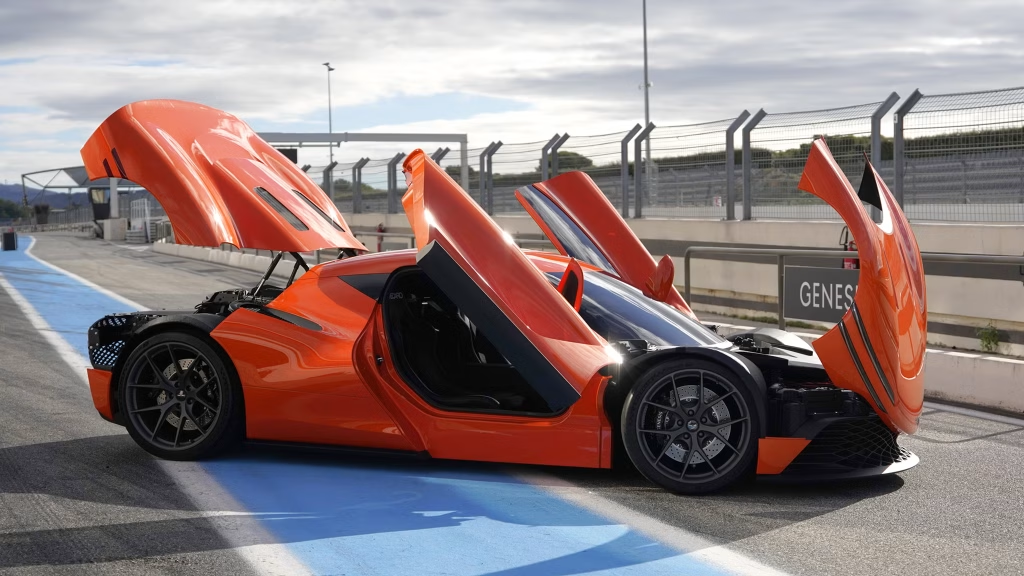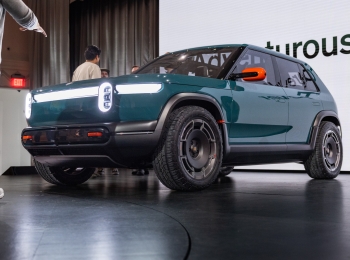In a move that’s turning heads across the automotive world, Genesis has officially confirmed plans to build a mid-engine, V-8-powered supercar based on the dramatic Magma GT Concept. What originally looked like a typical auto-show fantasy is now on track to become one of the most ambitious performance cars ever attempted by a mainstream luxury brand.
Unveiled in Le Castellet, France, the Magma GT Concept sits low, wide, and muscular, everything you expect from a high-end exotic machine. But this time, it’s not just a design exercise. According to Luc Donckerwolke, Genesis president and chief creative officer, this concept is the blueprint for a fully functional production supercar.
A Real Supercar Is in the Works
Genesis has already begun early engineering work, and the production version is targeted for 2028 or 2029. The car will ride on an aluminum monocoque chassis, chosen because it delivers strong performance without the massive cost of carbon-fiber construction.
Under the hood, actually behind the seats, Genesis plans to install a turbocharged 3.2-liter V-8, derived directly from the engine powering the upcoming Genesis GMR-001 hypercar, which will compete in the World Endurance Championship.
While technical details are still limited, early expectations include:
- Rear-wheel drive
- Eight-speed dual-clutch transmission
- Some form of hybrid or electric assistance to meet emissions rules
Even more exciting, Genesis intends to homologate the Magma GT for GT3 racing, putting it in the same class as proven supercar giants like Ferrari, Lamborghini, Porsche, and Mercedes-AMG. See more Photos


Motorsport DNA Built In
The GT3 race car variant may be developed with oversight from Cyril Abiteboul, the former Renault and Alpine F1 team boss who currently heads Hyundai Motorsport. He’s also leading the development of the GMR-001 hypercar that will compete at Le Mans in 2026.
The Magma GT’s design will change slightly for production, but Donckerwolke promises it will be even bolder and more polarizing than the concept. Genesis’ signature dual-light design will stay, and elements inspired by the GMR-001 hypercar will carry over as well.
Performance Without the Intimidation
Despite being positioned as the crown jewel of the Magma performance lineup, Genesis insists the Magma GT won’t be a car that punishes drivers. Instead, Donckerwolke describes it as a supercar that enhances the driver’s skill rather than demanding it.
He emphasizes that the focus is on balance, not just raw aggression, aiming to deliver a supercar experience that’s thrilling but approachable.
A Serious Business Move
Creating a mid-engine supercar is no small undertaking, especially for a brand known for luxury sedans and SUVs. But Donckerwolke, who previously led design at Lamborghini, understands the supercar world very well.
He notes that supercars typically have long life cycles, with plenty of room for variants and special editions that help maintain profitability. Genesis plans to follow a similar model:
- Launch the base car
- Add an “S” version
- Release a GT3 racing model
- Build a roadster
- Give the lineup a major refresh mid-cycle
- Repeat with new variants
GT3 racing programs also generate strong revenue, as seen with Ferrari, Lamborghini, and Porsche, thanks to customer team support and parts sales.
U.S. Market Is a Priority
Genesis has confirmed that the Magma GT will be sold in the United States, which remains Hyundai Motor Group’s largest and most important market. It’s also where consumers buy more mid-engine supercars than any other country.
And history shows that Americans will absolutely buy a supercar from a mainstream brand, just look at the success of the Acura NSX and the mid-engine Chevrolet Corvette C8.
The Bottom Line
Genesis is no longer just dipping its toes into performance; it’s diving straight into the deep end with a full-blown supercar aimed at competing with Ferrari and Lamborghini. Backed by real motorsport technology, a racing program, and a daring design philosophy, the upcoming Genesis Magma GT is shaping up to be one of the most unexpected and exciting supercars of the next decade.
FAQS
When will the new mid-engine supercar come out?
The supercar is expected to arrive around 2028 or 2029, since the company has already started early design and engineering work.
What engine will this new supercar use?
It will use a turbocharged 3.2-liter V-8 engine, based on the engine made for the brand’s upcoming hypercar in real racing.
Is this supercar just a concept or a real car?
It is a real car that the company plans to build. The concept only shows what the final model will look like.
Will the supercar be hybrid or electric?
It may have some electric assistance to help with emissions rules, but it will still keep a strong V-8 engine as its main power source.
Is the new supercar meant to compete with Ferrari or Lamborghini?
Yes. It is designed to challenge well-known supercars on both the road and the racetrack.
Will this supercar be used for racing?
Yes. The company plans to make a GT3 race car version so teams can use it in professional racing.
Will the production car look the same as the concept car?
It will be similar, but the final version will look a bit bolder and eye-catching compared to the concept.
Is the car going to be hard to drive?
No. The company says it will be easy to control and will make the driver feel more confident, not stressed.
How long will this supercar stay in production?
The platform is planned to last about 14 years, with updates and new versions during its life cycle.
Will this new supercar be sold in the United States?
Yes, it will be sold in the U.S., since it is one of the biggest markets for mid-engine supercars.












Leave a Reply